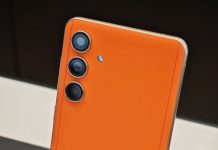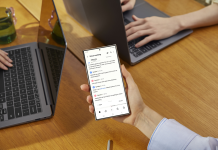The “Emergency SOS Via Satellite” feature implemented by Apple with the iPhone 14 series is gaining popularity. Almost every day, we hear about someone’s life being saved thanks to this feature. This brings users closer to choosing the iPhone when it’s time to buy a new phone. Other smartphone manufacturers, who do not want to lose their users, are also incorporating this feature. For example, Huawei recently announced that it will use the Emergency SOS feature on its new phones. Now, Samsung has taken a similar step on the Android front. Here are the details…
Samsung debuts satellite connectivity for smartphones using the Pixel 7’s modem
Samsung has announced its entry into the satellite connectivity arena for smartphones, following the lead of Apple’s iPhone 14 series. However, the company goes beyond Apple’s, as it enables users to send full messages, pictures, and even videos via satellite. The technology uses 5G NTN (non-terrestrial networks) to communicate, sending data from the smartphone to satellites before transmitting it back down to ground stations for transfer to the intended recipient or emergency services.

Samsung’s Exynos 5300 modem, the same modem used in Google’s Pixel 7 and Pixel 7 Pro, provides the technology to support satellite connectivity. Samsung has developed and simulated 5G NTN standard-based satellite technology on top of this modem, providing proof of concept. However, this functionality will not be available in current Google phones, as Samsung intends to incorporate it into future versions of its Exynos modems.
Earlier this month, Samsung announced that it was holding off on bringing satellite connectivity to its own smartphones until the technology was mature enough. The timing of this Exynos announcement is not ideal for Samsung’s own smartphones, as Galaxy flagships switch to solely using Qualcomm chips on a global scale. Qualcomm also recently announced its own form of satellite connectivity, but it is not yet available on any devices.
Satellite connectivity is poised to become one of the “next big things” in smartphones, providing a way for people to stay connected even in areas without traditional cellular coverage. The ability to send full messages, pictures, and videos via satellite could be particularly useful in emergency situations or remote areas where traditional communication methods are unavailable. With Samsung’s entry into this market, it remains to be seen how this technology will evolve and be adopted by consumers.
RELATED:
- Best Laptops for College Students in 2023
- Samsung Admits Slow Camera Speed: Fixes Issue but Not for Everyone
- Motorola Defy 2 Rugged Phone, Defy Satellite Link Bluetooth Accessory With…
- Microsoft Announces ChatGPT for Robotics, Robot Interactions Without Learning Complex Programming
- Poco C55 Launched in India with 6.71-inch HD+ display, Helio G85, 5,000mAh Battery and More
(via)







